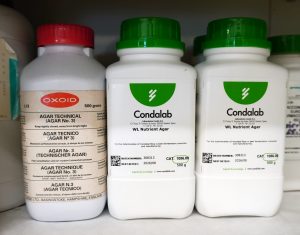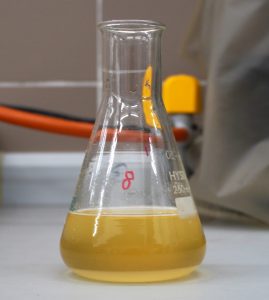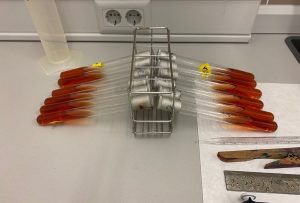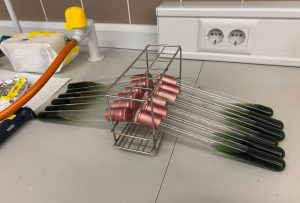1. Preparing culture mediums
Overview
The culture medium supplies the essential nutrients for microorganisms to grow in. The precise composition will depend on the species that is going to be grown, because the nutritional requirements vary considerably. Some microorganisms need very little to grow well in normal laboratory culture mediums, while other microorganisms require a great deal and they need certain substances such as vitamins, serum or blood to grow.
The composition of some culture mediums favors the growth of:
- a large number of species (nutrient agar, ordinary broth culture medium, Sabouraud agar),
- certain microorganisms (by hindering the development of others), are called selective culture mediums.
- whereas others, are developed to study certain physiological tests or biochemical tests (use of citrates, acidification of sugars, etc.).
The culture mediums have a number of components:
- Essential: The main ones include water, organic nutrients (carbohydrates, amino acids, vitamins, etc.) and inorganic nutrients (P, Fe, N, Mg, S, etc.).
- Alternatives: isosmotic substances (NaCl), solidifying agent (agar-agar), buffers, pH indicator, etc.
During the lab practicals culture media with very diverse compositions are going to be used, and they have three different types of consistency: solid culture mediums, semisolid and liquids. The later feature is important when it comes to preparing them. Although artificial or synthetic media can be prepared using their individual components, they can be acquired commercially as dehydrated culture media to which the necessary amount of water just has to be added. The manufacturer states the composition, the expiry date and the amount that must be weighed per liter to be prepared and even how it must be sterilized.
Specific objectives of the practicals
- Prepare culture media as a support and a source of nutrients for the development of microorganisms in vitro.
- Work with routine use instruments, which are also essential in the microbiology laboratory.
- Provide an introduction to handling microorganisms. Get an idea about the importance of working in sterile conditions and about the most common techniques used to achieve this.
Carrying out the practical
Each lab bench will be in charge of preparing an appropriate amount of a certain culture medium, to be used, in due course, by all the students of the lab practical group. The instructions to follow will depend on the lab bench number and the culture medium assigned, but in all cases, the steps are as follows:
- Dissolve the components of the culture medium in distilled water. In many cases a commercial medium with all the dehydrated components is used. According to the instructions of the manufacturer or the teacher, the right amount of water is added to obtain the required concentration of this. If the culture medium contains a solidifying agent (agar-agar) the preparation has to be heated up until it boils and it must be shaken from time to time, to make sure that the agar has dissolved completely (solid and semisolid media); liquid media do not have to be heated up, the mixture just has to be shaken until it dissolves completely.
- Sterilizing the solution. – Once the culture medium has dissolved, it must be sterilized so that contaminants do not grow in it. The procedure will be different, depending on how the culture medium is going to be used:
a) Solid culture media on a petri dish. – Cover the laboratory flask with a cotton plug and cover it with aluminum foil. Sterilize it in the autoclave (1210C) for 15-20 minutes. Once sterilized spread it out on to sterile Petri dishes and leave it to solidify.
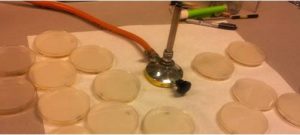
b) Solid culture media in test tube (agar slant): medium KIA and citrate medium
c) Liquid culture media.– Once the components have dissolved distribute them out into test tubes in a ratio of about 2-4 ml per test tube, cover with an aluminum stopper and sterilize it in the autoclave.

